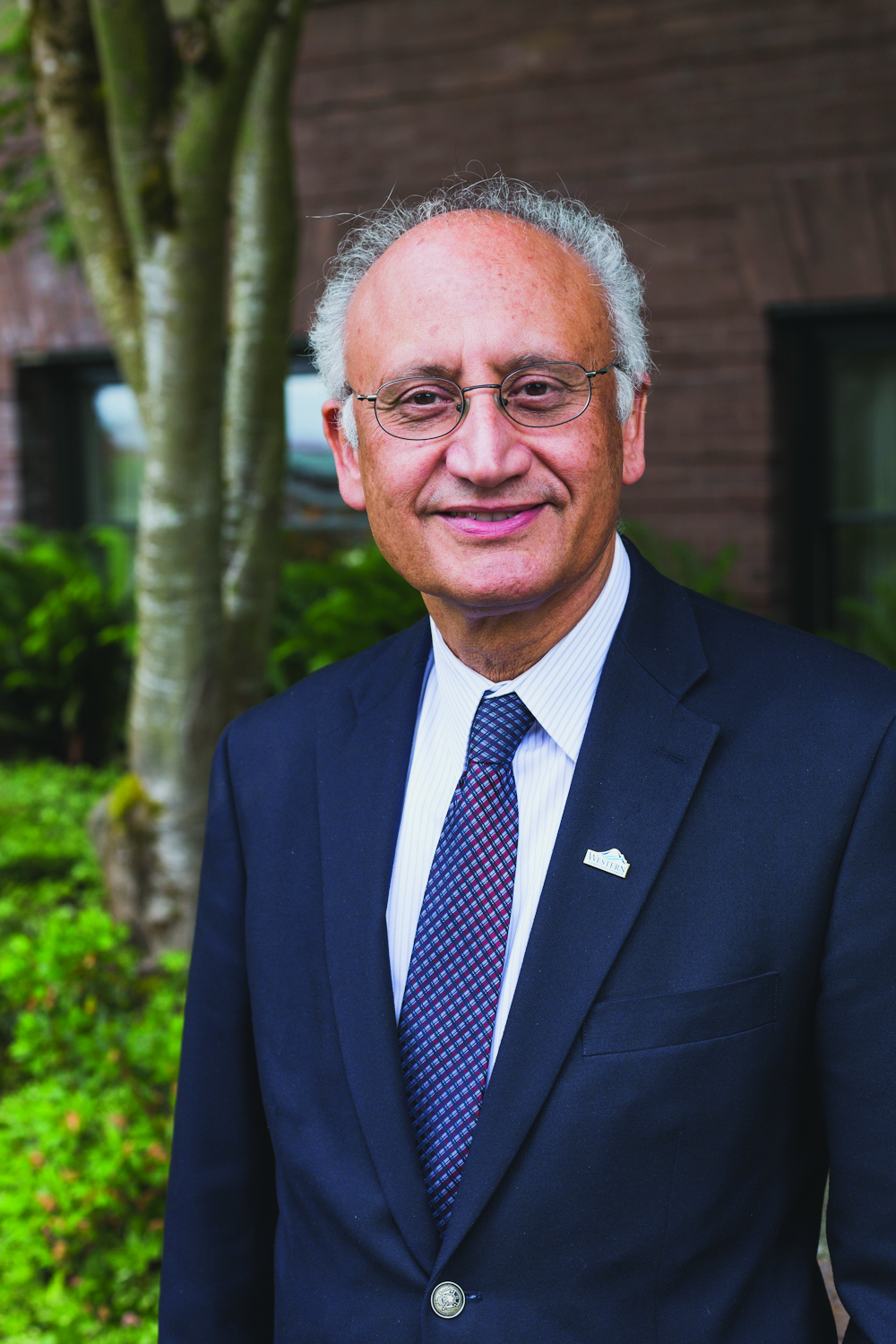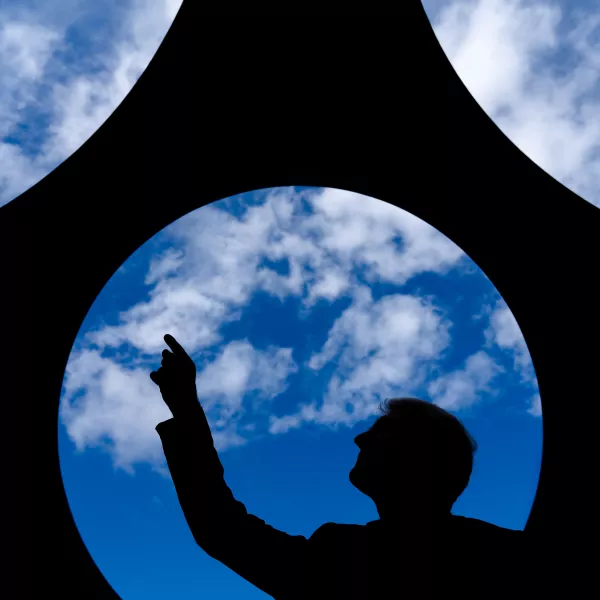Often when I’m feeling the need to get away from daily pressures to reflect or relieve stress, I’ll take a walk. One of my favorite places is the walk around Lake Padden in Bellingham. While the placid lake is beautiful to behold, and it’s nice to see people out and about again, I often find my attention being drawn upwards by the massive trees that surround the lake and the patches of blue sky and interesting cloud formations.
As I enjoyed the natural beauty recently, I began to reflect on the ways that our individual and collective attention is being increasingly drawn not up and outward, but down and in, toward solitary pursuits on smartphones and screens, and away from each other, the world we share, and our collective humanity. This also struck me as profoundly opposed to the idea of a liberal arts education, one interpretation of which is to “liberate” us from the confines of our limited experiences, to foster curiosity about the world beyond ourselves and the perspectives of others. As we struggle with the harmful effects of social isolation, increasing political partisanship, ideological bubbles, and nationalism, it seems that we could benefit by spending a little more time looking up.
In this issue, we examine the importance of looking up. Western Gallery Director Hafthor Yngvason likes to bring students and campus visitors to one of Western’s most iconic sculptures, aptly named “Skyviewing Sculpture,” by the Japanese American artist Isamu Noguchi. Noguchi was a seminal figure in the art world and beyond, and helped transform how the public viewed art by bringing it to shared public spaces.
Hafthor often stops his tours of the sculpture 75 yards away, where, from a distance, it’s a simple cube. But get closer and Skyviewing begs you to step inside the sculpture where the real magic is revealed. Once inside you can’t help but look up.
Just last year, Western was honored to be selected as the site of Fred Wilson’s chandelier sculptures, now hanging in the Viking Union. A conceptual artist who counts Noguchi among his influences, Wilson’s two Murano glass chandeliers, one of black glass and the other white and modeled in traditional Venetian and Ottoman styles, seek to examine how cultures interconnect through exploitation, oppression, trade routes and imperialism.
“There was no one who looked like me in art school,” the self-described “African, Native American, European and Amerindian” artist explains, “and there was no one who looked like Noguchi.” It was the Japanese American’s bicultural identity that helped lay the foundation for a cross-generational connection between these two artists.
If you haven’t been to campus for a while, or even if you have, I encourage you to take a moment and gaze up at these pieces of art. You may just find yourself reaching beyond the bounds of nearby time and space into the infinite and eternal.

